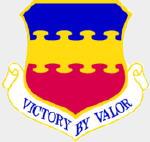Hobby Master HA3830 USAF General Dynamics F-16CJ Viper Fighter - 55th Fighter Squadron "Fighting Fifty Fifth", 20th Fighter Wing, Aviano AB, Italy, March 2011 Operation Unified Protector [Low-Vis Scheme] (1:72 Scale)
"Obsolete weapons do not deter."
- British Prime Minister Margaret Thatcher
 Even at the ripe old age of 20, the F-16 Falcon remains a fast and potent favorite among fighter pilots, and one of the best fighters in its class. Designed originally as a no-frills, single-engine "hot rod", the addition of improved radar and weaponry have made the Falcon a super, lightweight jet. Used mainly as a bomber, the Fighting Falcon can also turn-and-burn with unbridled fury when provoked. It is also one of the first operational fly-by-wire aircraft; its flight controls being electronically operated and computer controlled. A 20mm cannon, Maverick missiles, and laser-guided bombs make the F-16 a potent multi-role fighter. However, it's light weight, speed and agility make it the choice of the US Air Force's Thunderbirds aerobatic team.
Even at the ripe old age of 20, the F-16 Falcon remains a fast and potent favorite among fighter pilots, and one of the best fighters in its class. Designed originally as a no-frills, single-engine "hot rod", the addition of improved radar and weaponry have made the Falcon a super, lightweight jet. Used mainly as a bomber, the Fighting Falcon can also turn-and-burn with unbridled fury when provoked. It is also one of the first operational fly-by-wire aircraft; its flight controls being electronically operated and computer controlled. A 20mm cannon, Maverick missiles, and laser-guided bombs make the F-16 a potent multi-role fighter. However, it's light weight, speed and agility make it the choice of the US Air Force's Thunderbirds aerobatic team.
The F-16C (single seat) and F-16D (two seat) variants entered production in 1984. The first C/D version was the Block 25 with improved cockpit avionics and radar which added all-weather capability with beyond-visual-range (BVR) AIM-7 and AIM-120 air-air missiles. Block 30/32, 40/42, and 50/52 were later C/D versions. The F-16C/D had a unit cost of US$18.8 million (1998). Operational cost per flight hour has been estimated at $7,000 to $22,470 or $24,000, depending on calculation method.
Pictured here is a gorgeous 1:72 scale diecast replica of a USAF General Dynamics F-16CJ Viper fighter that was attached to the 55th Fighter Squadron "Fighting Fifty Fifth", 20th Fighter Wing, then deployed to Aviano AB, Italy, during March 2011 and participating in Operation Unified Protector.
Sold Out!
Dimensions:
Wingspan: 7-inches
Length: 8-inches
Release Date: August 2015
 Historical Account: "Operation Unified Protector" - Operation Unified Protector was a NATO operation enforcing United Nations Security Council resolutions 1970 and 1973 concerning the Libyan civil war and adopted on February 26th and March 17th, 2011, respectively. These resolutions imposed sanctions on key members of the Gaddafi government and authorized NATO to implement an arms embargo, a no-fly zone and to use all means necessary, short of foreign occupation, to protect Libyan civilians and civilian populated areas. The operation started on March 23rd and gradually expanded during the following weeks, by integrating more and more elements of the multinational military intervention, which had started on 19 March in response to the same UN resolutions. As of March 31st, 2011, it encompassed all international operations in Libya. NATO support was vital to the rebel victory over the forces loyal to Gaddafi. The operation officially ended on October 31st, 2011, after the rebel leaders, formalized in the National Transitional Council, had declared Libya liberated on October 23rd.
Historical Account: "Operation Unified Protector" - Operation Unified Protector was a NATO operation enforcing United Nations Security Council resolutions 1970 and 1973 concerning the Libyan civil war and adopted on February 26th and March 17th, 2011, respectively. These resolutions imposed sanctions on key members of the Gaddafi government and authorized NATO to implement an arms embargo, a no-fly zone and to use all means necessary, short of foreign occupation, to protect Libyan civilians and civilian populated areas. The operation started on March 23rd and gradually expanded during the following weeks, by integrating more and more elements of the multinational military intervention, which had started on 19 March in response to the same UN resolutions. As of March 31st, 2011, it encompassed all international operations in Libya. NATO support was vital to the rebel victory over the forces loyal to Gaddafi. The operation officially ended on October 31st, 2011, after the rebel leaders, formalized in the National Transitional Council, had declared Libya liberated on October 23rd.
The operation began with a naval arms embargo, while command of the no-fly zone and the air strikes against Libyan Armed Forces remained under command of the international coalition, led by France, the United Kingdom and the United States, due to lack of consensus between NATO members. On March 24th, NATO decided to take control of the no-fly zone enforcement, by integrating the air assets of the international coalition under NATO command, although the command of air strikes on ground targets remained under national authority. A few days later, on March 27th, NATO decided to implement all military aspects of the UN resolution and formal transfer of command occurred at 06:00 GMT on March 31st, 2011, formally ending the national operations such as the U.S.-coordinated Operation Odyssey Dawn.
The arms embargo was initially carried out using mainly ships from NATO's Standing Maritime Group 1 and Standing Mine Countermeasures Group 1 already patrolling the Mediterranean Sea at the time of the resolution, enforced with additional ships, submarines and maritime surveillance aircraft from NATO members. They were to "monitor, report and, if needed, interdict vessels suspected of carrying illegal arms or mercenaries". The no-fly zone was enforced by aircraft transferred to Unified Protector from the international coalition, with additional aircraft from NATO and other allied nations. The air strikes, although under central NATO command, were only conducted by aircraft of the nations agreeing to enforce this part of the UN resolution.









